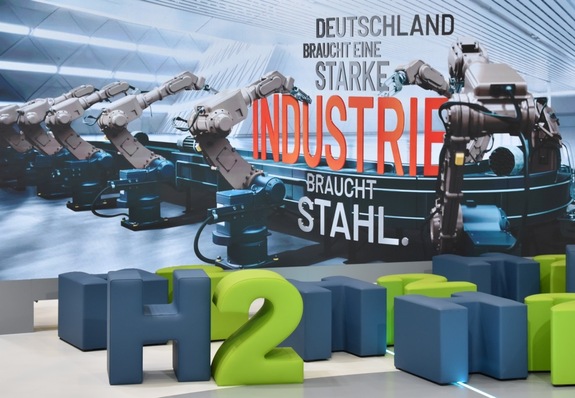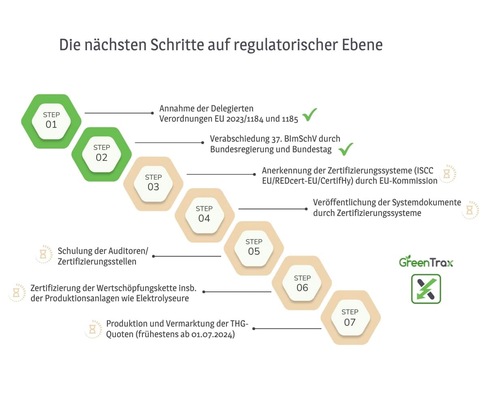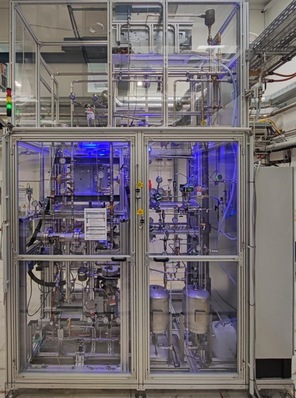Nevertheless, in the meantime, some things have settled into place. Inflation is not rising further at least, and the natural gas situation has been mastered, for the time being. Even the blackout predicted by some after the shutdown of the last three remaining nuclear power plants in Germany did not materialize. Instead, there is more renewable energy in this country than ever before – particularly in the electricity sector.
A good opportunity to take a breath and take stock of the situation: Where do we stand today? How is the energy transition progressing? What has been achieved so far in H2 and FC technology?
I have been engaged in hydrogen and fuel cells since 1997. At that time, this topic was a teeny-tiny niche. Fuel cells seemed interesting because they emit only hot air – only steam –and no harmful carbon compounds at all. There was hardly any literature on them; only a few research activities and demonstration projects. Federal support programs for them were nil.
A few car manufacturers were “already” experimenting with metal hydride storage for FC cars in the 1990s, and others with hydrogen. At the turn of the millennium, the first H2 and FC trade fairs and congresses emerged, but a portion of these disappeared again shortly after.
Optimistic developers joyfully announced back then that hydrogen-powered vehicles would be on the roads in 2004, and fuel cell-powered heaters in basements. Instead of series production, however, what followed were promises that it would finally happen in 2007, 2010, 2014 and 2017. H2 hype followed H2 hype, but of a market, there was no sign.
At times, the fuel cell had already been laid to rest – at least in the media. Several areas of application that were considered at the time lost interest. For example, the fuel cell-powered movie camera or the FC cargo bike.
New momentum first came into play in the 2010s, when hydrogen was being contemplated as a storage medium for renewable energies. Until then, it had always been said: Energy storage isn’t something we need. It was only when the idea of sector coupling emerged that it gradually became apparent that hydrogen could be a suitable medium for this purpose.
During this time, buzzwords such as power-to-gas, decarbonization and electrification emerged. The fuel cell fell little by little out of focus; however, increasingly more sights were set on hydrogen.
Nevertheless, several years passed in which the much-invoked Energiewende (energy turnaround) did not really gain ground. It took events like Fukushima, Dieselgate, debates on the health-related limits of emissions, and the founding of Fridays for Future until it became clear to political decision-makers as well that we can’t get by without hydrogen.
What then followed was the European Green Deal and numerous national hydrogen strategies in many countries around the world. The first large commercial and industrial businesses began to change their strategy and – at least partially – turned away from fossil energy structures.
It became increasingly clear that solar and wind power, – contrary to the many prior negative prognostications – together with suitable energy storage, have the potential to defossilize not only the power sector but also other energy sectors.
Most recently since the Russian war of aggression on Ukraine, it has become obvious that the times of cheap fossil energies are over, once and for all – which is positive in multiple respects. Because high prices for natural gas, oil and coal, which are likely to keep rising due to the growing cost of CO2 certificates, not only reduce energy consumption, they demand a change to more decentralization as well as more independence.
But where do we stand now?
Today, we have available to us almost too many H2 trade fairs and congresses – worldwide. We have investment commitments in the billions from major corporations. We have political strategies for establishing a Europe-wide H2 backbone in order to distribute renewable energies in the form of H2 gas across the continent.
We also have, however, millions of citizens who are very unsure and fearful of the future. Many cannot afford either heat pumps or electric cars. So their complaints are loud but, at the same time, understandable. That is why it is all the more important today to explain the energy transition, as well as H2 and FC technology, in a way that makes sense.
We are at the beginning of a gigantic transformation process that demands a lot from us all. At the same time, this process holds immense potential for development and redevelopment. That’s why it’s crucial to talk more about opportunities and less about problems.
I am absolutely certain that this process of change is possible without substantial loss of prosperity. We can show how new jobs can be created, how sustainable environmental standards can be set, how resources can be conserved, and at the same time how the standard of living can at least be maintained, if not improved– worldwide even.
A prerequisite for this, though, is that we do not leave everything up to the free market, but rather create suitable framework conditions that offer sufficient freedom to act but also planning security and, above all, are generation-fair.
Sincerely,
Sven Geitmann
Editor of H2-international








